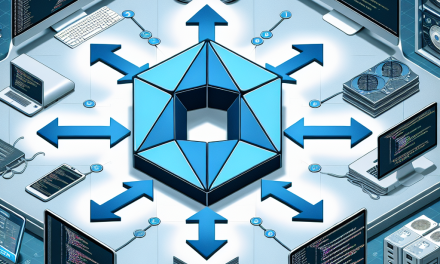In today’s cloud-native landscape, Kubernetes has emerged as the go-to orchestration platform for managing containerized applications. However, as organizations scale their deployments, the complexity of distributed systems also grows. This complexity necessitates robust monitoring strategies to maintain application performance, ensure system reliability, and enhance troubleshooting.
In this article, we explore effective strategies for monitoring Kubernetes deployments that can help teams manage their distributed systems efficiently.
1. Understand the Kubernetes Architecture
Before diving into monitoring strategies, it’s crucial to have a firm grasp of Kubernetes architecture. Kubernetes operates with several components, including:
- Nodes: Machines (virtual or physical) that run your applications.
- Pods: The smallest deployable units, which can contain one or more containers.
- Cluster: A set of nodes managed by K8s.
Understanding these components helps inform what metrics and logs should be collected, ensuring that you’re monitoring relevant aspects of your system.
2. Leverage Existing Monitoring Tools
Kubernetes offers a plethora of powerful tools to facilitate monitoring:
-
Prometheus: This open-source monitoring solution is popular for its powerful metrics collection and querying capabilities. It integrates seamlessly with Kubernetes and supports multi-dimensional data collection.
-
Grafana: Often paired with Prometheus, Grafana provides visually stunning dashboards that can give insight into application performance and resource utilization.
-
ELK/EFK Stack: The Elasticsearch, Logstash, and Kibana (or Fluentd instead of Logstash) stack is invaluable for log aggregation, search, and analysis. This is vital for troubleshooting and audit trails in distributed environments.
3. Implement Application Performance Monitoring (APM)
Analyzing metrics is only part of the picture. For in-depth application performance monitoring, consider integrating APM tools such as:
- New Relic: Offers deep visibility into application performance and user experience.
- Dynatrace: Provides automatic discovery and mapping of application components, allowing for faster problem resolution.
These tools provide deep context about application behavior, aiding teams in understanding how varying components interact in a distributed system.
4. Monitor Kubernetes Resource Metrics
Resource metrics such as CPU and memory usage are essential in a Kubernetes environment. Key metrics to track include:
-
Node CPU and Memory Usage: Understand the resource utilization at the node level to identify overallocation or underutilization.
-
Pod Resource Requests and Limits: Monitor whether pods are respecting the defined resource requests and limits to avoid performance bottlenecks.
-
Container Restarts: Frequent restarts can indicate problems in application code or configuration.
Configuring alerts for these metrics can help teams proactively address potential issues before they impact users.
5. Set Up Proactive Alerts
Alerting is a crucial element in any monitoring strategy. Set up alerts to notify teams when metrics exceed predefined thresholds. Proactive alerts should cover:
- Resource limits (CPU, memory, disk)
- Application errors
- Latency and response times
- Cluster health and node status
Use tools like Alertmanager (which comes with Prometheus) to group and route alerts effectively.
6. Use Distributed Tracing
Distributed tracing tools, such as Jaeger or Zipkin, enable you to see how requests travel through your microservices architecture. This visibility helps identify performance bottlenecks, latency issues, and service dependencies. With tracing, you can correlate logs, metrics, and traces, creating a more cohesive view of application behavior.
7. Regularly Review and Optimize
Monitoring Kubernetes is not a “set it and forget it” task. Regularly review your monitoring strategies and optimize:
- Analyze Trends: Use historical data to forecast capacity and improve system resilience.
- Performance Reviews: Conduct periodic reviews to ensure that your monitoring is aligned with evolving application architecture and team needs.
- Feedback Loops: Incorporate feedback from team members for continuous improvement.
8. Ensure Security Monitoring
As distributed systems can increase exposure to vulnerabilities, integrate security monitoring as part of your overall strategy. Tools like Aqua Security or Sysdig can provide insights into vulnerabilities in your containers and Kubernetes configurations.
Conclusion
Effective monitoring in a Kubernetes environment is vital for maintaining the reliability and performance of distributed systems. By leveraging the right tools, implementing proactive strategies, and continuously optimizing your approach, you can ensure that your Kubernetes deployments run smoothly. As your applications evolve, so too should your monitoring practices, allowing you to stay ahead of potential issues and deliver an exceptional user experience.
By adopting these effective strategies, organizations can navigate the complexities of Kubernetes and distributed systems with confidence, ensuring seamless performance and operational excellence.
For more insights and best practices on Kubernetes and cloud computing, stay tuned to WafaTech Blogs!





